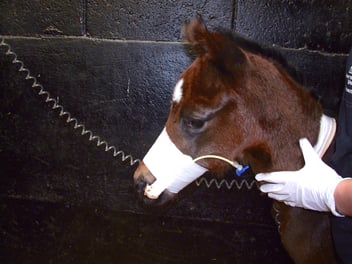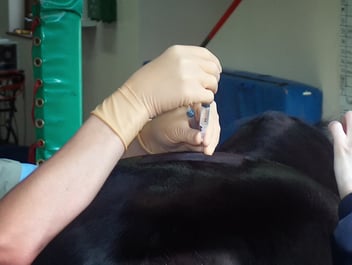Technique Tuesday - Emergency Tracheotomy
This Technique Tuesday, our co-founder and equine veterinary surgeon, Jennifer Corley, is sharing her expertise on the Emergency Tracheotomy technique. Have questions or comments? Drop them in the comment form below, and Jennifer will be more than happy to help! Stay tuned for more exciting insights and techniques from our amazing team!
Equipment Required:
• Tracheal tube (self retaining, short silicone or metal J tube).
• Clippers with a fine blade
• Chlorhexidine scrub solution and alcohol swabs
• 2% mepivacaine 5-10ml drawn up in a syringe with a 23-25 guage needle.
• Surgical gloves
• Number 11 scalpel blade on a handle
• Hemostat or retractor
Procedure:
The horse should be standing square with the head up to allow easy palpation of the trachea on the midline of the neck.
Anatomy for site for collection:
In a life threatening situation this procedure should be performed as fast as possible without aseptic preparation or local anaesthetic. Any available hollow tube eg a section of stomach tube or garden hose should be used until a proper tracheotomy tube is available. If there is distress but the horse is stable a 15cm square should be clipped and cleaned over the trachea at the junction of the cranial and middle third of the neck. 5-10ml of local anaesthetic should be injected subcutaneously in a 10cm line over the middle of the trachea. The area is then cleaned again and an incision in the skin made big enough to allow placement of the tube. The paired muscles overlying the trachea should be bluntly dissected and separated to expose tracheal cartilages. A horizontal incison should be made into the ligament between two tracheal cartilages. This should be large enough to insert the tube but no more than one third to one half the circumference of the trachea. Initial placement of the tube can be difficult using a hemostat to open the incision can help get the tube into the trachea which takes firm but gentle pressure.
Aftercare:
Once a tube is in place the site must be the tube must be cleaned and checked for patency regularly. The tube may be sutured in place and or wrapped to the neck with Elastoplast with a hole to allow breathing. It is common for these tubes to become clogged by respiratory secretions. It is usually necessary to remove and replace once or twice a day. Tubes should only be left in for as long as is absolutely necessary to avoid complications such as tracheal stricture. After emergency placement broad spectrum antibiotics should be used.
References:
1. J Stephen Emergency tracheotomy The Equine Hospital Manual. Page 60/61 Blackwell Publishing 2008.
2. Krpan MK Tracheotomy in the horse a photo essay Mod Vet Pract 65:9 1984.





